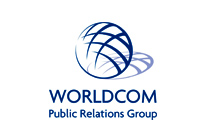
Double Materiality and CSRD: Why Stakeholder Communication Is More Critical Than Ever
The introduction of the Corporate Sustainability Reporting Directive (CSRD) marks a significant shift in how companies must report on environmental, social, and governance (ESG) factors. A key aspect of CSRD is double materiality—a concept that fundamentally changes how businesses assess and disclose their impact.
In a rapidly evolving regulatory and business landscape, organisations must embrace this broader view of materiality and, more importantly, communicate effectively with stakeholders to ensure compliance, trust, and long-term success.
What Is Double Materiality?
Traditionally, companies have focused on financial materiality, which looks at how sustainability issues impact a company’s bottom line. Double materiality expands this by adding impact materiality, meaning companies must also assess how their activities affect people, the environment, and society at large.
Under CSRD, companies must now report on:
- Financial Materiality – How sustainability risks and opportunities affect the company’s financial performance.
- Impact Materiality – How the company’s operations impact the environment and society.
Why Stakeholder Communication Is Essential
With these new reporting requirements, companies must engage more deeply with their stakeholders—employees, investors, customers, regulators, and communities.
1. Stakeholders Influence Your Double Materiality Assessment
To comply with CSRD, companies need to engage stakeholders to identify material ESG issues. What’s financially material to investors may differ from what’s impactful to employees or communities. Regular dialogue with stakeholders ensures that reporting reflects real-world concerns and regulatory expectations. This is why we encourage all of our clients to critically review their stakeholder maps on annual basis.
2. Transparency Builds Trust and Reputation
Stakeholders demand greater transparency around corporate sustainability efforts. Vague commitments or greenwashing won’t cut it. In fact a recent EY Ireland’s State of Sustainability report, found that concern about greenwashing has nearly tripled, with 35% of businesses now saying it affects their communication strategies, up from 13% in 2022.
CSRD requires data-driven disclosures, and clear, consistent communication helps companies demonstrate accountability, enhancing trust among investors, customers, and employees.
3. Employee Engagement and Cultural Alignment
Sustainability reporting isn’t just for regulators—it impacts employees, too. Companies that communicate effectively about their double materiality efforts can drive employee engagement, fostering a culture of responsibility and innovation. Employees want to work for businesses that align with their values.
4. Avoiding Legal and Financial Risks
Failure to comply with CSRD could lead to regulatory scrutiny, reputational damage, and financial penalties. Clear stakeholder communication ensures that all parts of the business—from leadership to operational teams—understand reporting obligations, reducing the risk of misinformation or non-compliance.
5. Competitive Advantage and Investor Confidence
Investors are increasingly integrating ESG factors into their decision-making. Companies that clearly communicate their double materiality approach and sustainability impact will attract responsible investors and maintain a competitive edge in the market.
How to Strengthen Stakeholder Communication on Double Materiality
- Engage Early and Often – Regularly consult stakeholders to understand their concerns and perspectives.
- Use Clear, Accessible Language – Avoid jargon and ensure sustainability reports are digestible for all stakeholders.
- Leverage Multiple Channels – Use reports, social media, webinars, and direct engagement to communicate effectively.
- Showcase Impact, Not Just Metrics – Use real-world examples and case studies to illustrate progress and accountability.
Although your organisation may not be in scope for CSRD your customers may well so these rules also apply.
Conclusion
Double materiality under CSRD is not just a reporting requirement—it’s a shift in how businesses understand and communicate their impact. Companies that proactively engage stakeholders and integrate transparency into their strategy will not only ensure compliance but also build long-term trust and resilience. The era of ESG accountability is here—communication is the key to navigating it successfully.
We can help you communicate your sustainability narrative and journey with clarity and impact. Click here to find out more, or reach out to our Cork or Dublin offices to set up a call.
For more stories like this sign up for our Insights newsletter ›
BACK TO TOP









